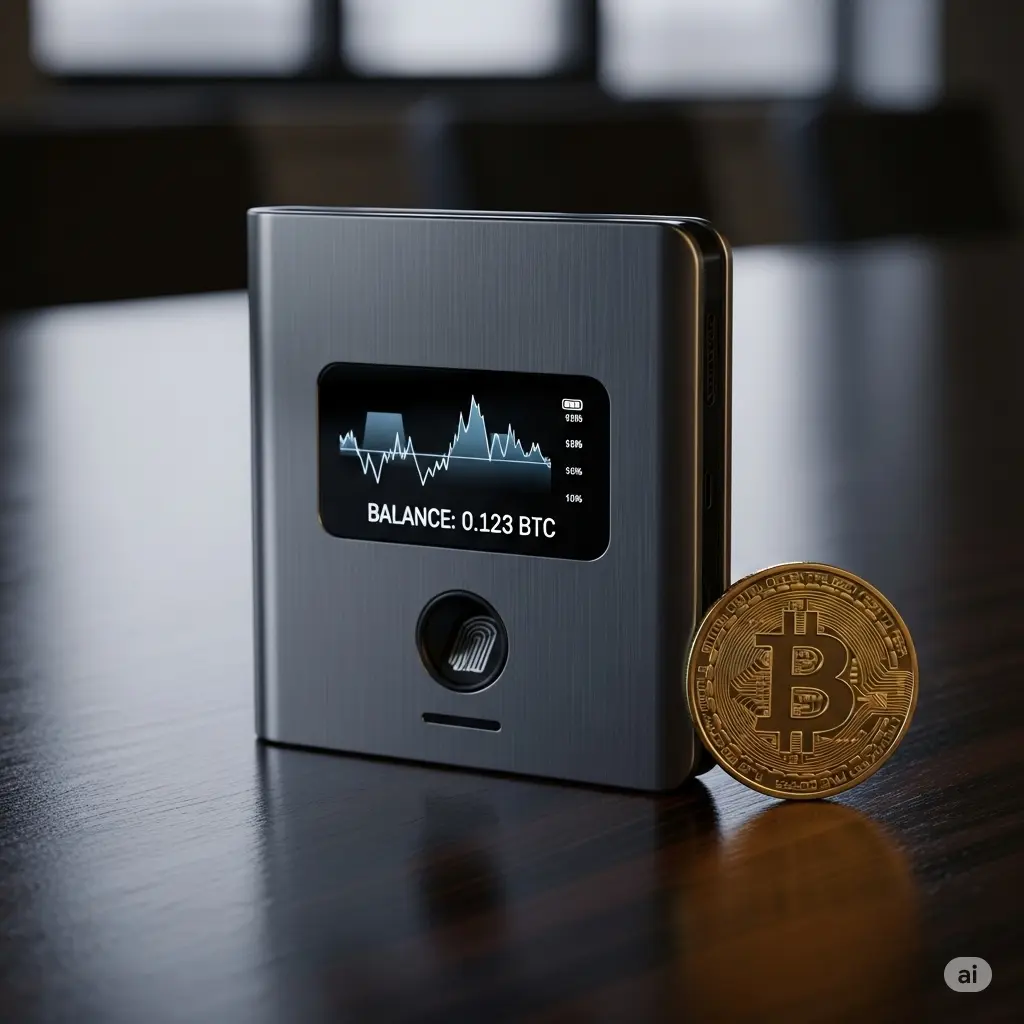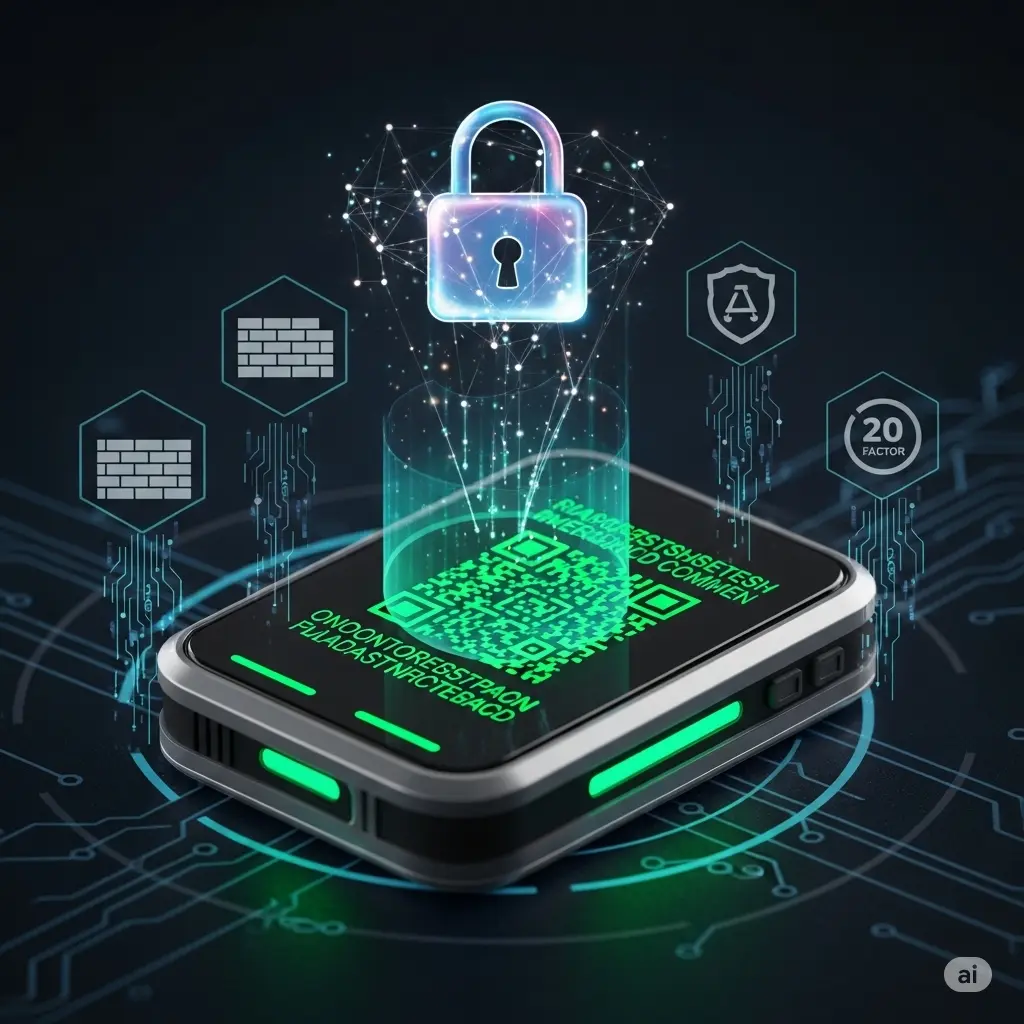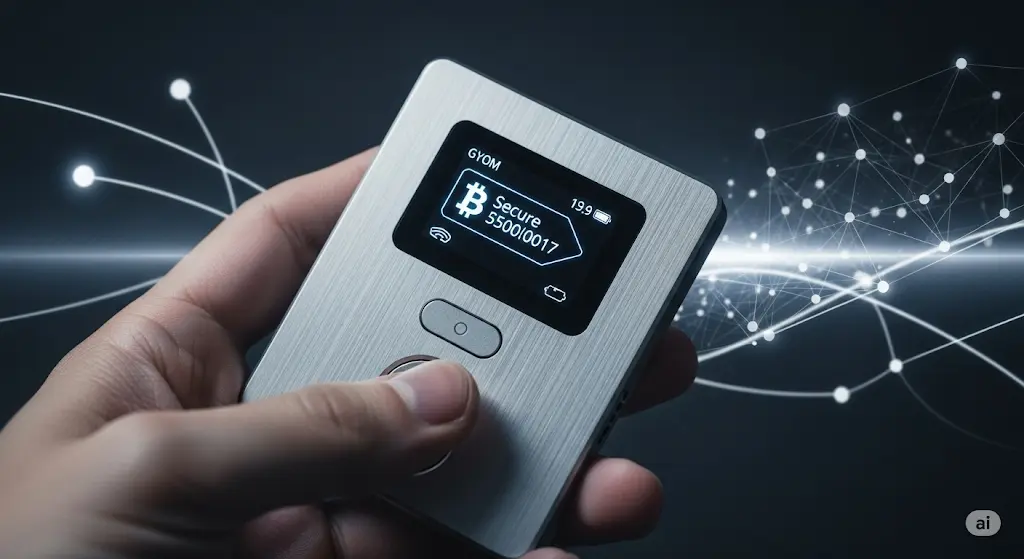Have you ever worried about losing crypto to hacks or scams?
In today’s fast‑changing digital world, such fears matter more than ever.
Enter the Secure Crypto Wallet—a wallet with premium‑level protection inside.
This brave new tool promises safety, confidence, and peace of mind for crypto holders.
This topic gains urgency. Why?
Crypto value and theft attempts both soar as adoption increases.
Hackers grow more cunning. Regulators push for safer storage solutions.
A reliable wallet can make a decisive difference in keeping your assets safe.
Let’s explore how a Secure Crypto Wallet can protect your crypto today.

What Is an Exclusive Secure Crypto Wallet?
Imagine a wallet combining the strongest security features.
It offers multi‑factor authentication and encrypted key storage.
It may include biometric sensors or hardware isolation.
It could support both cold wallet and hot wallet modes.
It protects from phishing, physical tampering, and remote breaches.
Some designs isolate private keys in secure hardware chips.
Others add smart‑contract firewalls or insurance coverage.
Basically: this wallet aims to be your crypto fortress.
Why This Topic Matters Right Now
Crypto adoption in 2025 is booming.
Yet security threats expand in parallel.
We’ve seen high‑profile hacks stealing millions.
Media sites like Global Crypto Sports highlight such incidents.
Investors increasingly demand stronger safeguards.
Hardware wallet scammers target unsuspecting people daily.
Regulatory bodies push for higher consumer protection standards.
This wallet brings advanced features to meet these demands.
That makes the Secure Crypto Wallet both timely and essential.
Key Crypto‑Related Terms
Blockchain
A blockchain is a chain of digital blocks.
Each block holds transaction data.
It’s tamper‑resistant and public.
That ensures trust among participants.
DeFi (Decentralized Finance)
DeFi refers to financial services without banks.
It uses smart contracts on blockchains.
You can borrow, lend, and trade directly peer‑to‑peer.
Web3
Web3 is a new web generation.
It emphasizes user control and data ownership.
It supports decentralized apps and wallets.
Decentralized Wallet
A decentralized wallet gives users full ownership.
No central authority controls the keys.
You are solely responsible for wallet security.
Understanding Wallet Types: Cold, Hot, Hardware, Mobile
Cold Wallet vs Hot Wallet
- A cold wallet stores keys offline.
- It offers maximum protection from online threats.
- But you need physical access to use it.
- A hot wallet is connected online all the time.
- It allows instant access and easy trading.
- Yet it carries a higher risk of hacks or phishing.
Hardware Wallet
- A physical device storing private keys.
- Examples include Trezor and Ledger.
- It keeps keys off your computer or phone.
- You confirm transactions on the device itself.
- It offers a robust layer of crypto wallet security.
Mobile Wallet
- An app on your phone.
- Includes hot wallets like Trust Wallet, MetaMask Mobile.
- Mobile wallets are convenient and easy for daily use.
- But they expose you to malware and app‑based threats.
Comparing Wallet Types
| Wallet Type | Offline? | Convenience | Security Level |
|---|---|---|---|
| Cold Wallet | Lower | Very High | |
| Hot Wallet | High | Moderate to Low | |
| Hardware Wallet | Medium | Very High | |
| Mobile Wallet | Very High | Moderate |
Combining a hardware wallet with offline storage is ideal for strong protection.
Breakdown of Premium Protection Features
Secure Enclave / Secure Element Chips
These chips store keys in isolated memory.
They prevent extraction even if the device is compromised.
Think of them as tiny safes embedded in hardware.
Multi‑Factor Authentication (MFA)
MFA requires two or more verification steps.
For example: PIN + fingerprint + device confirmation.
It prevents unauthorized access even if one factor is leaked.
Transaction Approval Screens
These let you review trade or transfer details.
You see the amount, address, and token information.
That helps avoid phishing and unintended transfers.
Firmware Verification & Updates
Genuine wallets verify firmware before allowing updates.
That protects against compromised or fake versions.
Updates add new security features and bug fixes.
Air‑Gapped Signing
An air‑gapped wallet never touches the internet directly.
You sign transactions offline.
Then you broadcast them with a QR or USB pass‑through.
That cuts attack risk to an absolute minimum.

Real‑World Examples and Case Studies
Case Study: Ledger Breach vs Hardware Isolation
In a breach, Ledger exposed customer contact data, not keys.
Yet their device stored keys in secure element chips.
That isolation prevented actual theft of crypto assets.
Example 1: Phishing Attack on Hot Wallet Users
In 2024, many lost funds via fake wallet apps.
Attackers cloned mobile wallet interfaces.
They captured seed phrases and drained wallets instantly.
Using a hardware wallet with MFA and transaction screens could have stopped that.
Example 2: Air‑Gap Defense in Practice
Some users use offline computers to create unsigned transactions.
They transfer to internet‑connected PCs only to broadcast.
This process keeps private keys safe from remote intrusion.
Pros and Cons of an Exclusive Secure Crypto Wallet
Benefits
- Superior crypto wallet security via hardware and MFA.
- Protection from phishing, malware, and remote breaches.
- Helps guard against physical tampering or theft.
- Encourages smarter security habits.
- Often includes wallet backup and recovery.
- Great for long‑term crypto holders.
Potential Drawbacks
- Higher cost than software or mobile wallets.
- Less convenient for frequent trading.
- Setup may be complex for beginners.
- Risk of losing the device or recovery phrase.
- Some models may not support all crypto tokens.
Actionable Advice for Beginners & Intermediate Investors
For Beginners
- Choose the best crypto wallet 2025 based on reviews and reputation.
- Prefer hardware wallets with secure elements and MFA.
- Always write your seed phrase on paper.
- Store backup copies in safe separate locations.
- Update firmware only from official sources.
- Verify every transaction before approving.
For Intermediate Users
- Use an air‑gapped setup for large transactions.
- Enable biometric or multiple MFA layers.
- Keep a small amount in a mobile wallet for daily trades.
- Use a hardware wallet for long‑term holdings.
- Regularly test your wallet backup recovery process.
- Monitor wallet health via trusted tools.
Wallet Backup Tips
- Always back up your seed phrase as a wallet backup.
- Use metal backup plates for durability.
- Keep backups in secure and separate physical locations.
- Never back up to cloud or screenshot format.
Decentralized Wallet Considerations
- With decentralized wallets, you control your keys.
- That boosts freedom—but also means full responsibility.
- Keep your backup secure and encrypted if digital.
- Avoid sharing seed phrases with anyone.
Your Questions Answered (FAQ)
1. What is the difference between a cold wallet and a hot wallet?
A cold wallet stores keys offline. It resists online threats better.
A hot wallet stays connected online. It offers faster access and ease of use.
2. Which is the best crypto wallet 2025?
The best crypto wallet 2025 depends on your needs.
Hardware wallets with secure elements, MFA, and firmware checks rank highest.
Always research and read up-to-date reviews.
3. How does crypto wallet security work?
Security relies on private key protection.
Secure elements, MFA, transaction review screens, and backups strengthen it.
Air‑gapped signing adds an extra layer of defense.
4. What is a decentralized wallet?
A decentralized wallet means you only control your keys.
No central authority can retrieve or manage them for you.
It offers autonomy, but you must safeguard backup diligently.
5. Why should I use a hardware wallet?
Hardware wallets keep your keys offline.
They block software-based hacks, phishing, and keyloggers.
They often include secure UI for transaction verification.
6. How do I perform a wallet backup?
Write your seed phrase clearly on paper or metal.
Make two or more copies in safe locations.
Test recovery on a new device before you deposit large funds.
7. What are the risks of mobile wallets?
They stay connected to the internet.
They may get targeted by malware or phishing apps.
They usually lack secure elements or physical isolation.
Conclusion
We’ve explored the concept of the Exclusive Secure Crypto Wallet with Premium‑Level Protection Inside.
We learned why its importance has grown in 2025.
We defined blockchain, DeFi, Web3, and decentralized wallets.
We compared wallet types: cold wallet, hot wallet, hardware wallet, and mobile wallet.
We dissected premium features like secure chips, MFA, air‑gapped signing, and firmware verification.
Real‑world examples showed how they prevent hacks and phishing.
We weighed pros, cons, benefits, and potential risks.
We offered actionable tips for both beginners and intermediate users.
We answered common questions in an easy‑to‑understand FAQ.
Stay updated, stay safe, and invest wisely.
A strong Secure Crypto Wallet is your first line of defense.
By choosing the right wallet, you protect your assets, privacy, and peace of mind.
Take action today. Share this post, follow Global Crypto Sports, and safeguard your crypto future.




